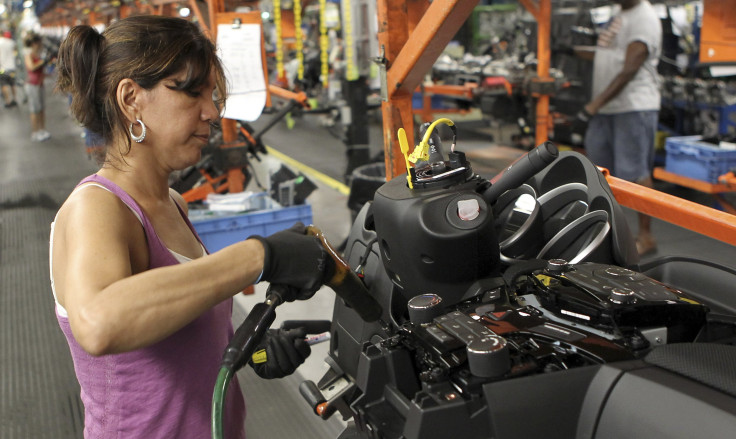How Women Can Save the Global Economy

Two years ago, the head of Deutsche Bank commented that adding women to the executive board would make it "prettier and more colorful," sparking a firestorm of commentary on how women are portrayed in the workplace.
Today, women make up 40 percent of the total world labor force, but half of them still aren't working. New data shows that if they did, it would do a lot more than pretty things up -- it could save a country's economy.
A report from the International Monetary Fund estimates that the global economy has missed out on 27 percent of GDP growth per capita due to the gender gap in the labor market.
"Progress towards leveling the playing field for women has stalled," said IMF Chief Christine Lagarde, announcing the report.
The IMF estimates that having an equal number of women to men in their labor force could increase economic growth by 5 percent in the U.S. and as much as 34 percent in Egypt. While Japan deals with an aging and shrinking workforce, women could fill the gap and boost the economy by almost 10 percent.
"There is ample evidence that when women are able to develop their full labor market potential, there can be significant macroeconomic gains," the report says.
The reasons for a lack of growth vary depending on each region.
In South Asia, where the female labor force participation rate is below 25 percent in urban areas, the literacy ratio of men to women is the worst in the world.
The economic downturn had opposite effects in developed and developing countries. In OECD countries, the female labor rate increased thanks to employment growth in the service sectors, while male-dominated areas such as manufacturing and construction fell.
Meanwhile in developing countries, women took the brunt of employment loss. Females accounted for 70 percent of all layoffs in Mexico and Honduras in recent times, for example. And in many developing countries, women are more involved in the "informal" labor force -- typically unskilled, unpredictable work.
The gender wage gap in developed countries is still around 16 percent. While the difference isn't stark between younger women and men, it changes once women reach childbearing age.
The largest gaps were in China, Indonesia and South Africa.
Interestingly, there is less of a difference in the Middle East and North Africa, since the small number of women who are working are usually better educated than their male colleagues.
Brazil is a success story. There are more educated women than men in the country and more than 60 percent of them (including the president) are working, thanks in part to a variety of government initiatives that help women access social services and credit.
Norway implemented a 40 percent quota for women on boards of publicly traded companies, while Sweden implemented a generous parental leave policy with high coverage for child care and education services for children. Meanwhile in the Netherlands, the female participation rate grew from 35 percent in 1980 to over 80 percent in 2008 thanks to well-compensated parental leave and greater availability of part-time work contracts.
© Copyright IBTimes 2024. All rights reserved.












